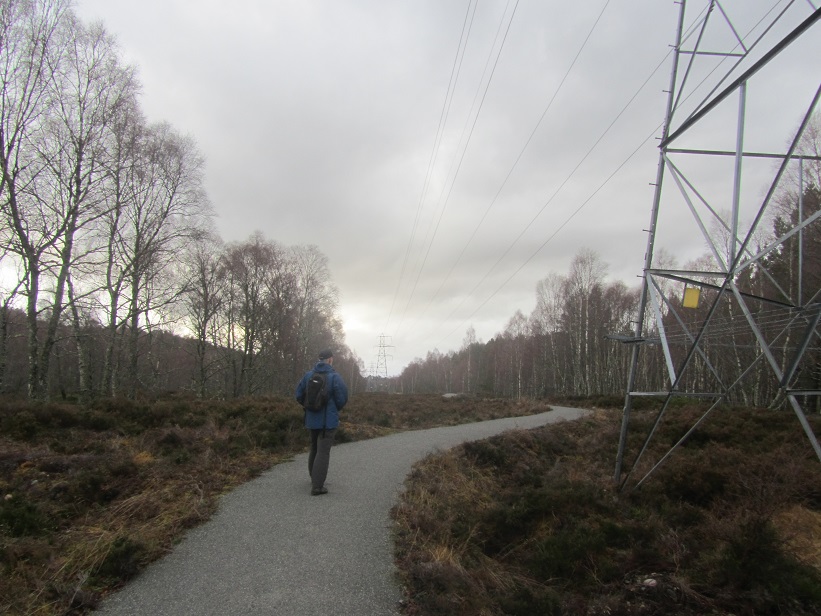
While the Beauly Denny has been a blot on the landscape, as a consequence of the visual impact of the pylons and the poor restoration of ground around (covered in my last post (here)), elsewhere in the National Park a very different approach is being taken. The powerline infrastructure is being modernised but to the benefit, not at the expense of, the landscape.
Much of this is due to the Cairngorms National Park Authority which, while failing to stop the Beauly Denny, did win support for the associated rationalisation scheme for the the removal of c93km of existing LOW voltage or redundant tower lines from Etteridge, through Boat of Garten, Tomintoul, the Lecht and Strathdon towards Tarland – a great arc around the north of the National Park. The Report on the Beauly Denny at the December planning Committee reports this is now complete:
The scheme started in 2014 and completed in the summer of 2017 with the removal of the last towers between Ruthven and Etteridge. Much of the new low voltage line has been undergrounded using a mole plough for cabling so there has been relatively little disturbance of vegetation. CNPA officers have undertaken site inspections and advised upon some technical matters relating to natural heritage. There have been modifications to wayleaves and some tree removal during the project but the work has been undertaken in a satisfactory manner and with minimal disturbance so has been successful
There are many positive consequences of this for everyone who lives in and visits the Cairngorm National Park (see photo above and here) and this should be seen as a great success story. What particularly interested me from the report, however, was CNPA officers positive assessment of how the work was done, by mole plough. I had come to similar conclusions about the benefits of using this technology to bury powerlines from two visits to Glen Tromie in November. The rest of this post will use what is happening at Glen Tromie to illustrate the benefits of using this technology before arguing it provides a great opportunity to enhance the landscape throughout both our National Parks.
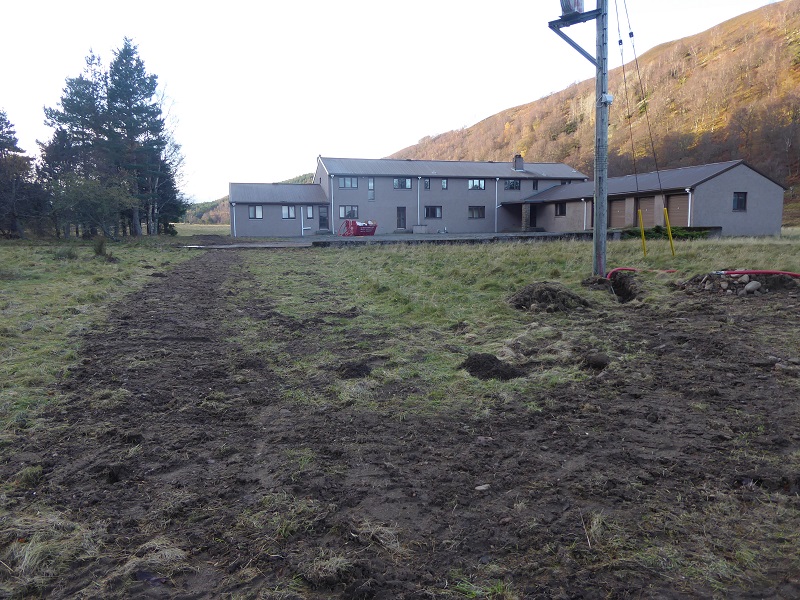
In November, as part of my visit with Dave Morris to discuss hill tracks (see here), Thomas McDonnell, the Conservation Manager of Wild Land Ltd, took us up Glen Tromie to look at tracks there. On the way we stopped off at Lynaberack Lodge, a planning disaster which thankfully the estate intend to remove, so Thomas could have a word with a team who were about to return to Germany with their mole plough (sorry no photos!). It was as a result of this that I became aware that part of estate’s programme to re-wild the landscape is to underground powerlines – work which is basically being paid for by Anders Povlsen, the billionaire owner. Two weeks later I went back myself to take a proper look at how the work has been done.
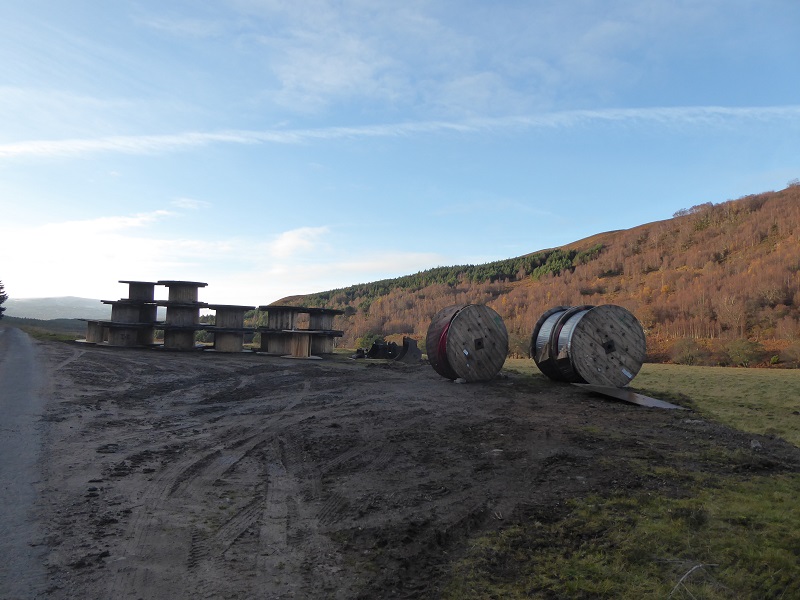
The work is not yet complete. While the contractors have buried the new cable, it is not yet connected and removal of the existing powerline and clear-up has still to happen. The advantage,in terms of the timing of my visit, was I could record the landscape impact of the existing powerline.
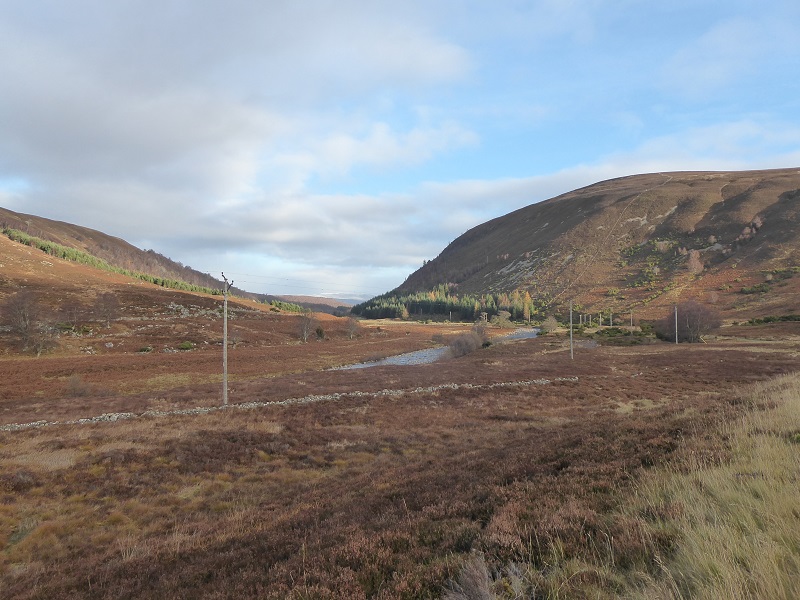
Imagine the difference, when this section of powerline is removed. While there is still a road running up the glen, to the person walking or cycling along it the view will feel significantly wilder.
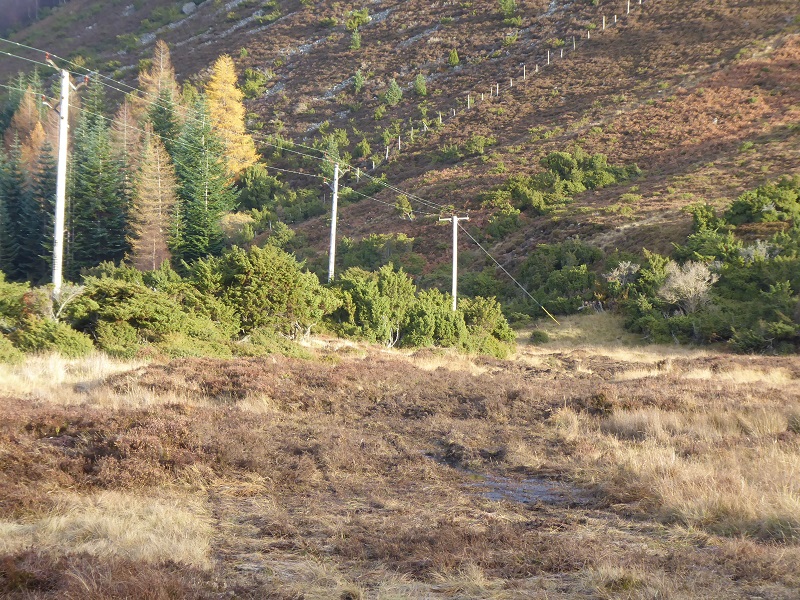
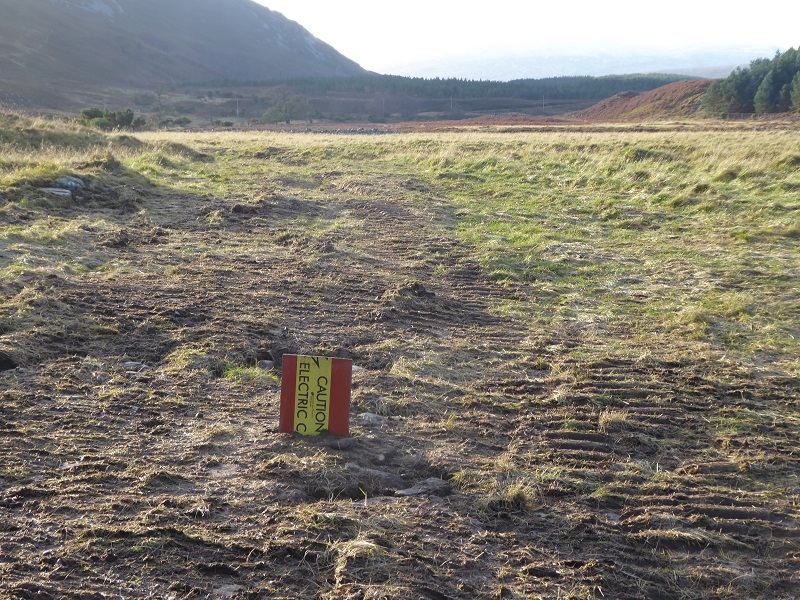
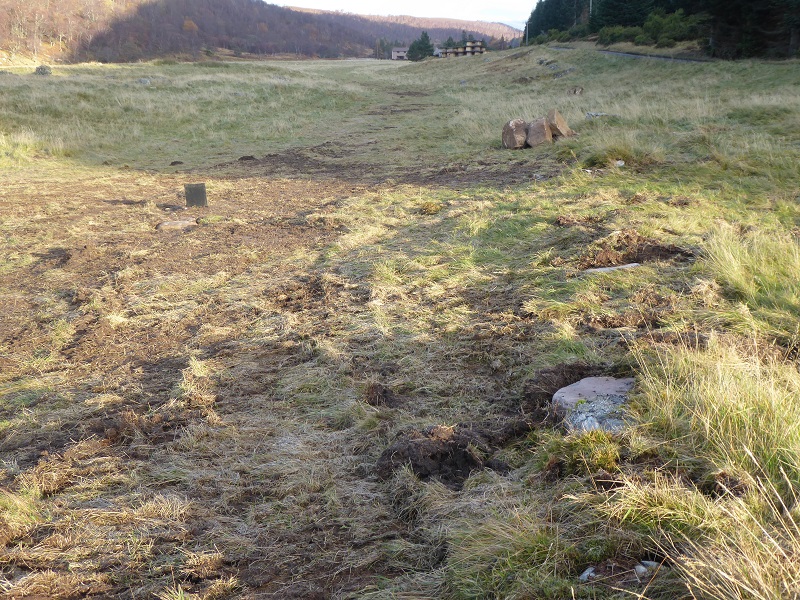
Apart from the removal of boulders, the vegetation has been little disturbed and on the grassy floor of the glen should recover from the passage of vehicles very quickly. I suspect by next summer, when the grass has had time to grow again, it will be very hard to detect the line of the buried cable.
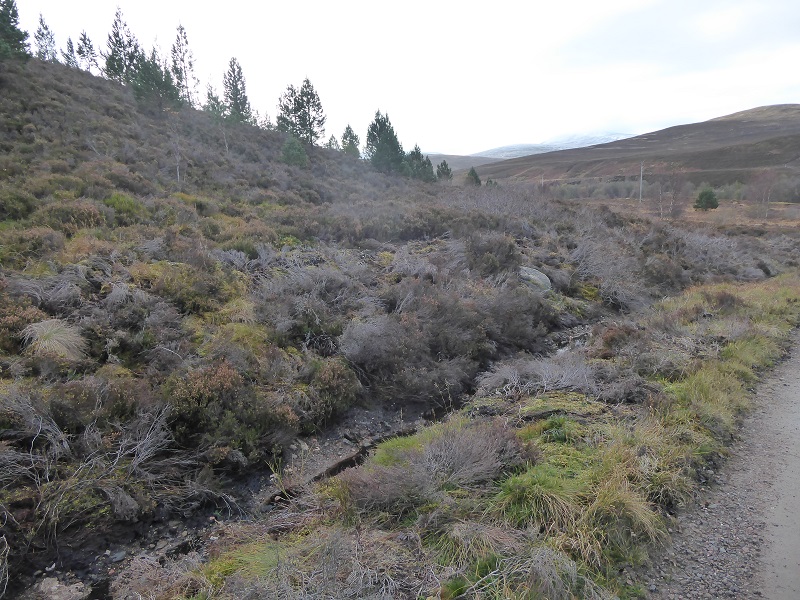
I was most impressed that the mole plough could also be used on heather moorland and cause so little destruction to vegetation. Again, I think the vegetation here should more or less fully recover in a season.
There was a section further up the glen where I had great difficultly following the line that had been taken and wondered whether I had reached the end of the work.
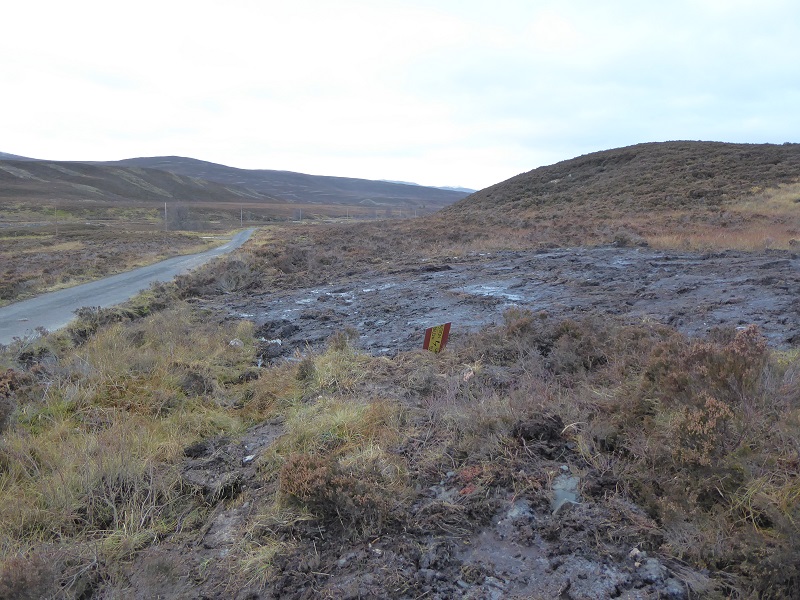
I then came across the patch of very disturbed ground in the photo above. I was unable to ascertain the cause of this – it may have been a consequence of the land being very boggy – but in the context of several kilometres of buried cable it just served to illustrate in general how well the work had been done and the potential of using mole ploughs.
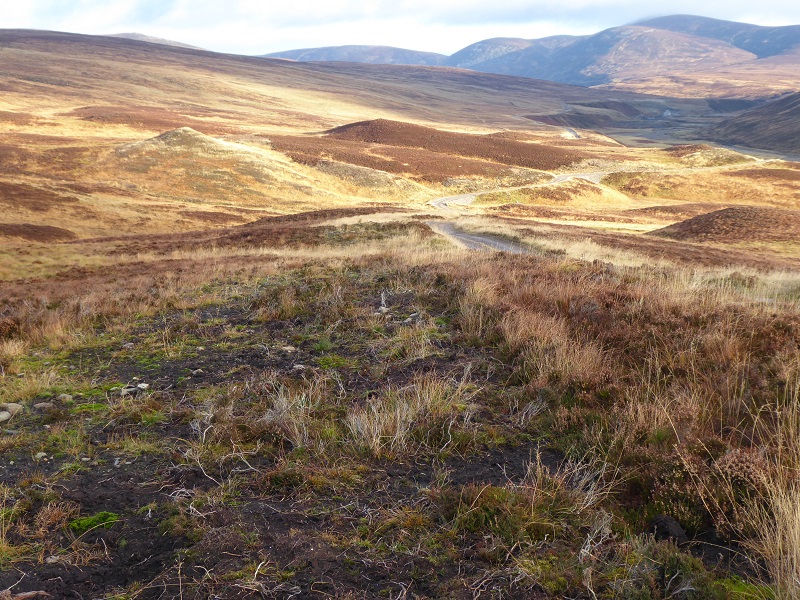
The advantages of using the mole plough can be seen by comparing the powerline burial in Glen Tromie with that to the new Glen Bruar scheme. While parkswatch has given extensive coverage to the Glen Bruar pipeline restoration above the powerhouse, below it several miles of new electric cable was required to connect it to the grid. The work for this was generally to a high standard – and hence I have avoided comment – but the methodology used was to excavate a ditch, bury the cable and then refill it. Despite the care taken, over two years on the line of the cable is more visible than that in Glen Tromie two weeks after the work finished. The lesson, I believe, is that burying cable with a mole plough, if done well, does significantly less damage that any methods that involves removing vegetation, excavating a ditch and then trying to restore this work.
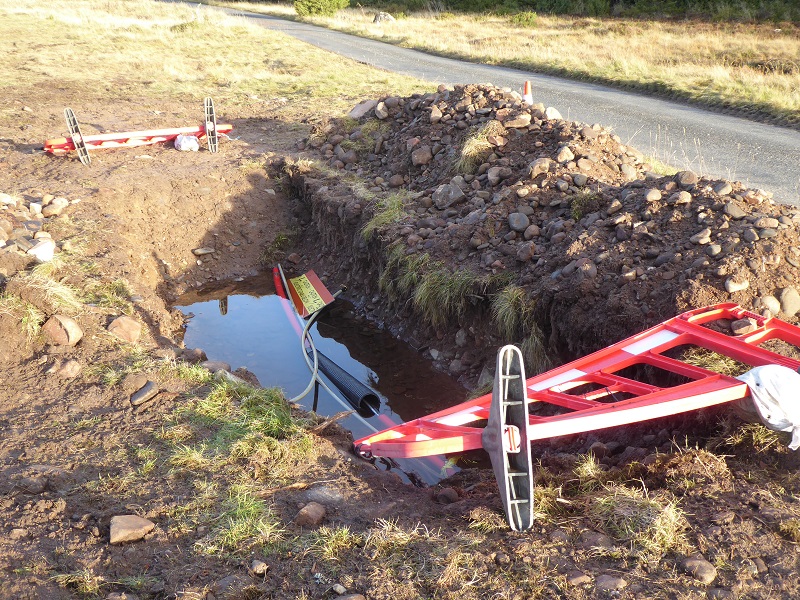 I had seen one example of excavation in Glen Feshie – the hole appeared for connection purposes. It is very difficult – and incidentally far more labour intensive – to restore the ground caused by such digging. Compare this to the impact and work involved in using a mole plough. Thomas MacDonell told us, if my memory is correct, that it had taken just five days to bury the cable in Glen Tromie and, from I saw, very little further work or monitoring will be needed.
I had seen one example of excavation in Glen Feshie – the hole appeared for connection purposes. It is very difficult – and incidentally far more labour intensive – to restore the ground caused by such digging. Compare this to the impact and work involved in using a mole plough. Thomas MacDonell told us, if my memory is correct, that it had taken just five days to bury the cable in Glen Tromie and, from I saw, very little further work or monitoring will be needed.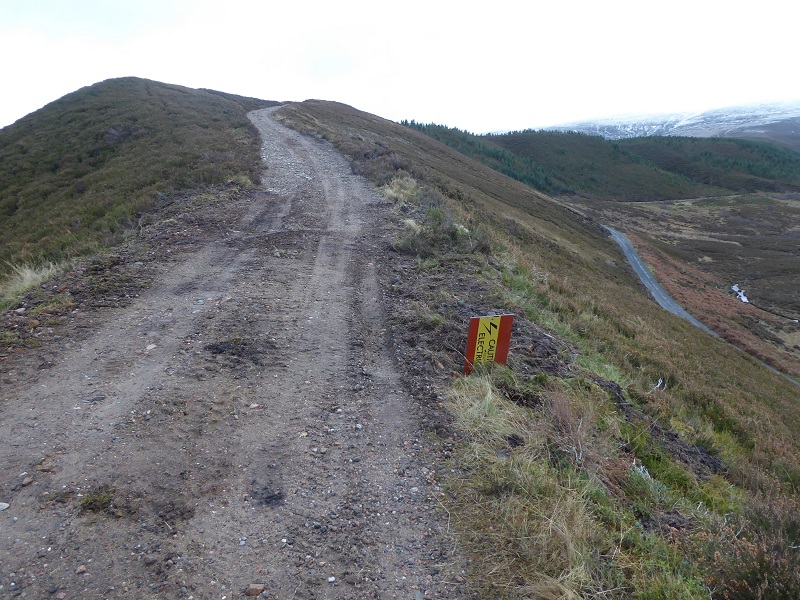
Sign marking where cable crosses the track leading up to the upper Allt Bhran hydro intake – the track below the moraine leads to the Gaick
I left the line of the buried cable to head further up the Allt Bhran and look at tracks there (to be covered in further post) convinced that mole ploughs are the way forward and wondering why there is a paucity of contractors using this technique in Scotland.
What needs to happen
While I hope in due course to visit sections of the powerline that has been undergrounded in the Beauly Denny restoration scheme (any photos from readers of before and after would be welcome), from the evidence I have seen at Glen Tromie, there is no reason to disbelieve the statement by CNPA staff that the use of the mole plough there has been very effective. I think there is an opportunity for the CNPA to advertise and build on that success with a view to ensuring that as much low voltage cable as possible is undergrounded in the National Park. Among the ways the CNPA could help this to happen are:
- to commission research/publish a study on the impacts and costs of the mole plough compared with traditional ditch digging techniques to underpin a future action plan in the National Park
- to share this experience with other planning authorities, including the Loch Lomond and Trossachs National Park Authority, and with landowners.
- to encourage other private landowners to follow the brilliant example set by Wild Land Ltd and to consider what other opportunities there might be for enhancing the landscape through burial of further powerlines in the National Park
- to develop planning policy in this area, as part of its consultation on the new National Park Development Plan, with a policy presumption against any new overhead powerlines and guidance on how any new powerlines can be buried
- encouraging contractors to purchase the appropriate equipment and develop the expertise to use it effectively
That then would leave for the future the big challenge, how we can undergound the HIGH voltage powerlines which blight our National Park landscapes, like the Beauly Denny or the many that cross the Lomond and Trossachs National Park.
I hadn’t realised that Scottish Power has been so historically against undergrounding HV cables – particularly as compared with National Grid which has adopted a lot more positive approach to doing this in national parks in England and Wales (e.g. as evidenced here http://www.telegraph.co.uk/business/2016/10/24/national-grid-to-spend-460m-burying-lake-district-power-lines/). However, how is the SSE scheme going to underground cables where environmental improvement would justify it (see here https://www.ssepd.co.uk/Undergrounding/)?
Thanks Andrew, there was announcement last April that 2km of powerline was going to be buried near Callander in LLTNP http://news.ssen.co.uk/news/all-articles/2017/04/power-lines-to-be-undergrounded-in-callander/. I also understand an area on west side Loch Lomond has been proposed for burial further short section of powerline. You are completely right about the paltry amount SSEN is spending. Compare the 90km SSEN agree to bury in whole of UK with the amount buried in CNPA (its less than 93k as not all undergrounded) and the £15m this is costing to the £460m being spent by National Grid and its clear how little this in. SSEN was going to use a mole plough at Callander and I would like to see a specialist team/business in Scotland that did nothing else but underground power lines. Five people, as far as I could see at Tromie, were in the German Team that undergrounded over 4km line in 5 days. With expertise like that in Scotland, these jobs could be done far more cheaply than at present.